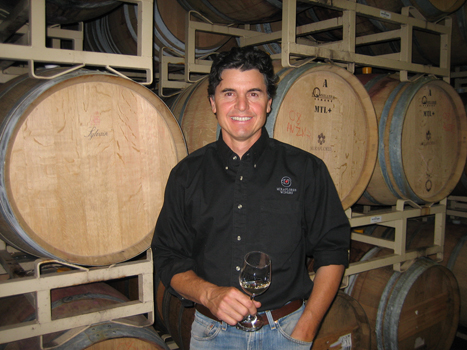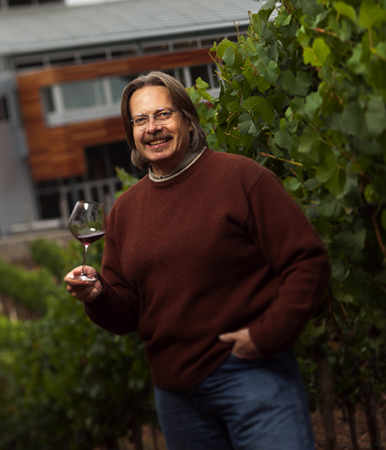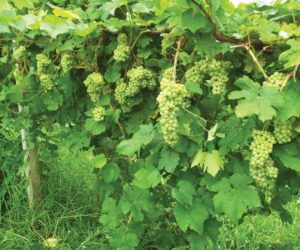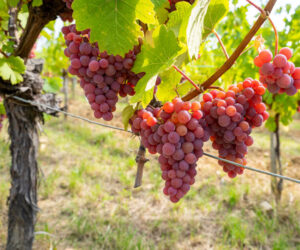Dessert wines can come in many different forms — from fortified Port styles to low-alcohol German styles. All dessert wines, however, need to strike the right balance. In this issue, two professional sweet wine experts discuss their winemaking methods.

Marco Cappelli, Owner of Cappelli Ranch Wines in Somerset, California. Marco started making his own wine in college at UC-Davis. He was hired as the Winemaker at Swanson Vineyards in Rutherford, California in 1987. He opened Cappelli Ranch Wines in 2006. He currently sells his grapes to local wineries, and makes dessert-style wines for a number of wineries.
I make a variety of dessert wines, including Port-style wines with Merlot, Barbera, Charbono, Zinfandel, Syrah, Petite Sirah, Souzão, Tinta Cão and Tempranillio. I also make other fortified styles with Muscat Canelli and Orange Muscat. I also make a fortified style called Angelica with Black Muscat and Mission grapes, which is not a Port-style. This is made by essentially adding a high proof spirit to grape juice. It can’t be called wine unless it ferments a little bit, but it is basically fortified grape juice. I also make some Botrytis-affected juice with Sémillon and Sauvignon Blanc. I make Icewine-style wines with Gewürztraminer, and finally I also make Amarone-style wines from Syrah and Petite Sirah.
I think that the easiest style of dessert wine to make, for home winemakers, is either the Amarone style or the fortified styles, because they tend to be more bulletproof or sensitive to mistakes (provided you have a good source of high-proof alcohol).
For the fortified wines I ferment using a clean and vigorous yeast like Prise de Mousse. With these wines, I know that I can stop the fermentation quickly, regardless of the yeast strain, by adding the fortifying alcohol, so the object for me is to make sure the fermentation goes cleanly to retain the natural aromatics.
In the wines that will not be fortified, I just allow the natural yeasts to do the fermentation. These fermentations tend to be longer, slower processes, and they eventually stop on their own. The native yeasts are, generally, not that vigorous or alcohol tolerant.
We do bulk age some of our dessert wines in barrels — sometimes for many years — because most of the flavor is going to come from the oxidative effects, including tawny Ports and the Angelica where we want to get those toasty, caramel characters. For other styles, like Sauternes-style (Botrytis-affected) wines, we use a high percentage of new oak because we want to get that oak character, the aromatics and the tannins for the mouthfeel. We’ll age the Sauternes-style wines for up to three years in the barrel to develop that structure. The only wine we age in stainless steel is the Icewine-style wines. This is because we don’t want any oak character and don’t believe they can benefit from any oxidation — it is best to keep them as fresh and clean as possible.
There are all kinds of pitfalls that a home dessert winemaker can encounter, but one of the most important, when making Icewine and Sauternes-style wines is starting with the proper amount of sugar in the must. You want to be able to have a starting sugar that, when fermented out, will not be too sweet or too dry. Start with too little sugar and the yeast tend to ferment too dry. If you start off too high the yeast will have a hard time fermenting, period. I think the best range would be somewhere between 33 and 38 °Brix.
Also if you want to make a fortified wine, be sure to use the highest proof spirit for fortifying as possible. The higher the proof the less water you are adding to the wine, which means less dilution. Try to hit it as close to 18-20% alcohol on the first try, because if the wine continues to ferment you can produce higher levels of volatile acidity, and will also ferment away sugar. Be sure to monitor the wine post fortification to make sure it’s not still fermenting.

Bob Cabral, Winemaker at Williams Selyem Winery in Healdsburg, California. Bob attended Fresno State in the 1980s and started working in the wine industry soon after. He moved to Sonoma in 1987 and he found his way to Williams Selyem, where he has been for the last 14 vintages.
At Williams Selyem we make a later-harvest Gewürztraminer from our Vista Verde Vineyard, as well as a Port made from Touriga National, Tinta Cao, Tinta Madeira and Tinta Francesca.
When I make the late harvest Gewürztraminer, I always use a very slow fermenting yeast strain called Beerenauslase. I have had long, cold ferments go for as long as 130 to 150 days using this strain at temperatures around 52–54 °F (11–12 °C). This is ideal so that the fermentation doesn’t blow off a lot of aromas and esters. It retains the purity of fruit and retains the natural aroma esters in the final wine. It is also easy to arrest fermentation by chilling and adding a small amount of SO2. The temperatures are usually below 45 °F (7 °C).
For the Port, I use the proprietary Williams Selyem strain because of its ability to ferment rapidly and build the necessary heat for thermal extraction (95 to 98 °F/35 to 37 °C) before arresting the ferment with fortifying spirits. This method gets good tannin extraction out of the skins. Then I add a special distillate, which is 155 to 165 proof to take the Port up to 20% alcohol.
When making a Port-style wine, a common mistake is fortifying on the skins. I press at around 7 °Brix into a tank and then fortify the fermenting juice to stop the fermentation. If you do it on the skins you get a lot of extraction and end up with an undrinkably-tannic wine. Pressing too late is also a mistake and the wine will be drier than you had hoped. Also, sometimes it is harder to stop a ferment than you think. Add the spirits at about 5.5 °Brix. If you want to add spirits to the grape skins, take out a portion of the must with the skins, add spirits to that, then back blend.







